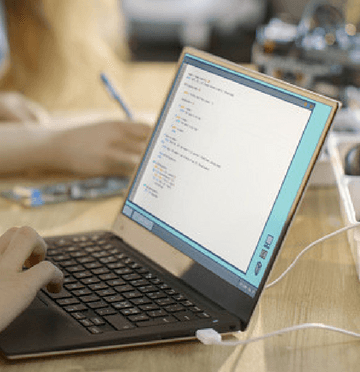
The Hour of Code is a global movement that has served almost 4.7 million students, across 180 countries. And its back this week as schools across the nation celebrate Computer Science Education Week.
Here is how the Hour of Code is making a difference:
Currently, there are 122,547 events registered for the Hour of Code 2017. Is your school one of them?
The world today is built around computers, and it starts with K-12 education. (We could continue down the computer science path, but just check out our blog post on the topic here.)
Computing jobs are the number one source of new wages in the U.S., and a computer science major can earn 40 percent more than the college average.
However, with 486,700 open computing jobs across the nation, only 42,969 computer science students graduated last year into the workforce, according to the Code.org site.
Code.org conducted a study to learn the impact of the 2016 Hour of Code. This is what they found after just one Hour of Code:
And 98.1 percent of Hour of Code organizers (such as teachers) rated their experience as ‘good’ or ‘great.’
It’s simple. Choose a one-hour coding activity for your students. Tutorials are broken out by grades (pre-reader, grades two through five, grades six through eight, grades nine and above) along with experience (beginner or comfortable).
There’s also a ‘How-To’ guide that lists out the steps and provides resources for teachers.
One Florida teacher presented four tips on how to prepare for the Hour of Code and beyond.
Time to code! And don’t forget to share your success with the hashtag #HourofCode.
And the Hour of Code would not have come into existence without the annual Computer Science Education Week, which began in 2009. It is held to honor the birthday of computing pioneer, Admiral Grace Murray Hopper, born December 9, 1906.
The first CSEdWeek was focused on policy issues and policy makers, but has since expanded to reach K-12 students, teachers (both CS teachers and non-CS teachers), parents, community members, administrators, and staff.
This is quite the task to take on, and here’s why:
Some states are already taking major steps to incorporate CS into their curriculum, and the Hour of Code can help keep that momentum going. In 2013, only 12 states counted computer science for graduation math or science requirements. That number is now up to 34 states, plus D.C.
Code.org has an interactive map where you can see the number of open computing jobs, CS grads, and their policies. How does your state match up?
If you’re looking to help make CS fundamental to education in your state, Code.org created nine policy ideas and helpful tips.
The coding doesn’t have to stop once students leave the classroom and complete their Hour of Code. But it will stop if students don’t have access to the Internet outside of school.
Kajeet provides students the safe Internet connectivity they need to continue coding, through the Kajeet SmartSpot® (Wi-Fi hotspot) and Kajeet SmartBus™ (school bus Wi-Fi). Contact us today and let us know how we can help your students succeed.
If your school or district is participating in the Hour of Code or you have any helpful tips for fellow educators, comment below.


